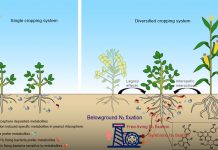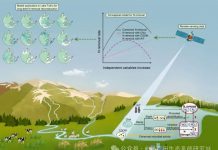Xin XL, Yang WL, Zhu QG, Zhang XF, Zhu AN, Zhang JB. Abundance and depth stratification of soil arthropods as influenced by tillage regimes in a sandy loam soil. Soil Use and Management, doi: 10.1111/sum.12412
Abstract
Different tillage regimes can change soil micro‐environmental characteristics, which may influence the distribution and abundance of soil arthropods. In this study, soil arthropods and soil properties under a winter wheat–summer maize cropping system were investigated in different tillage regimes over four seasons at two depths. The tillage treatments included conventional tillage (CT), tillage once a year (T1), tillage every two years (T2) and no‐tillage (NT). The results showed that the primary taxa of soil arthropod were Acarina (65.8%), Collembola (28.5%), Diplura (1.4%) and Coleoptera (1%) over the whole sampling period. The total arthropod density was influenced by tillage treatments and season of sampling. Values for CT plots were significantly greater than those for the NT plots in autumn and spring. In contrast, the Shannon–Wiener diversity index (H’) and the evenness index (J) were relatively higher in CT treatment. The Acarina/Collembola (A/C) ratio was significantly smaller in NT treatment for some sampling seasons as mites were more sensitive to tillage practices. The QBS‐ar index did not show a clear pattern among treatments in this study. Soil arthropods notably showed seasonal variation in depth stratification. Relative to CT, the total soil arthropods in the NT plots tended to concentrate in the upper layer due to soil compaction in the lower layer. The climate conditions and soil physical properties were the main factors affecting the soil arthropod distribution and composition, as the soil chemical and microbial properties did not differ significantly among all tillage treatments.









